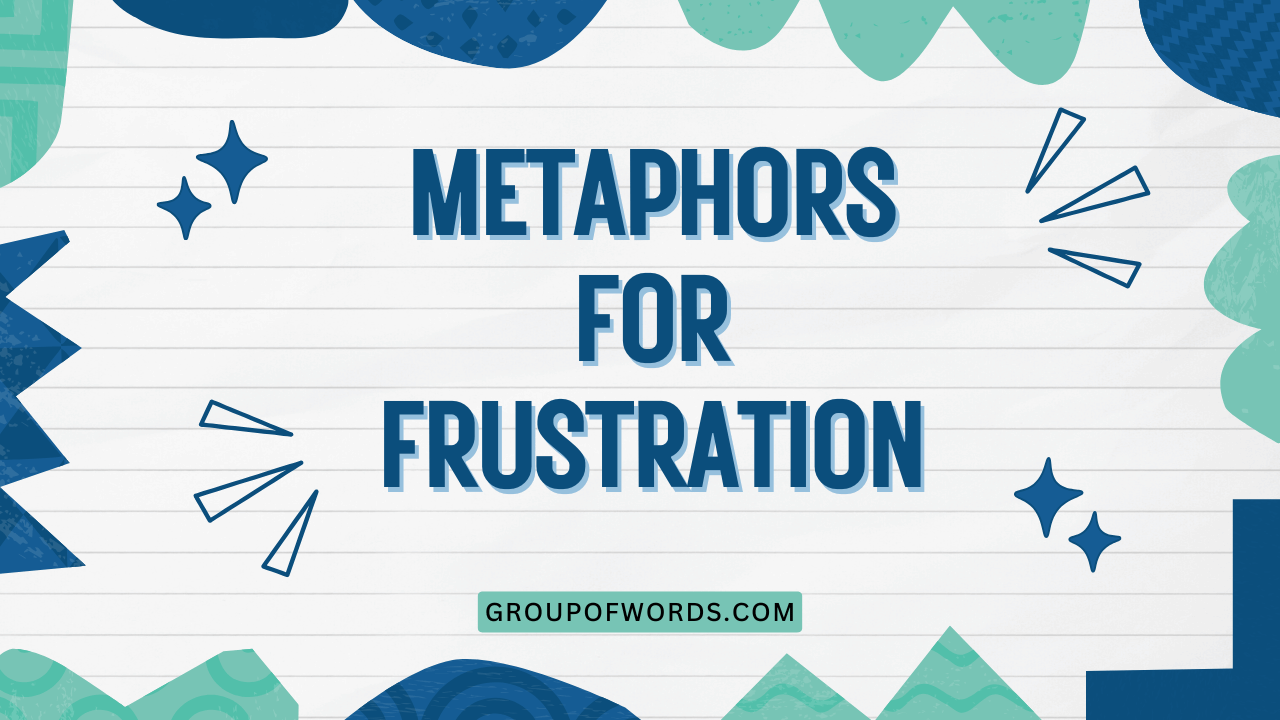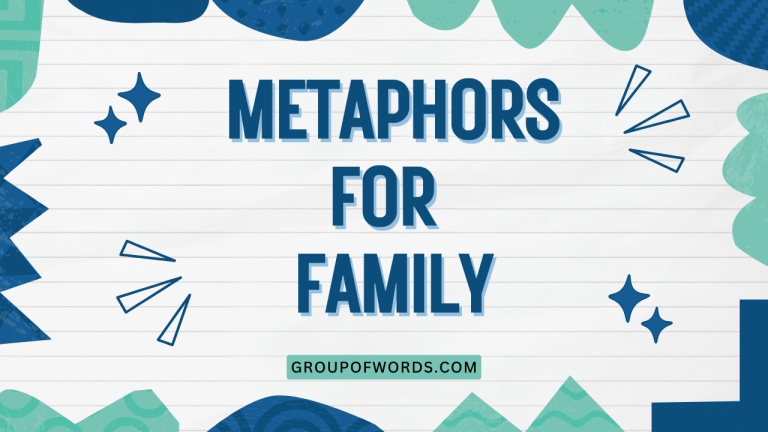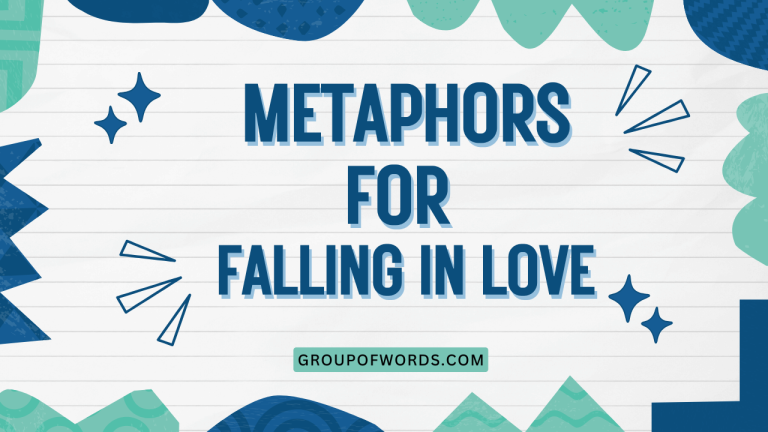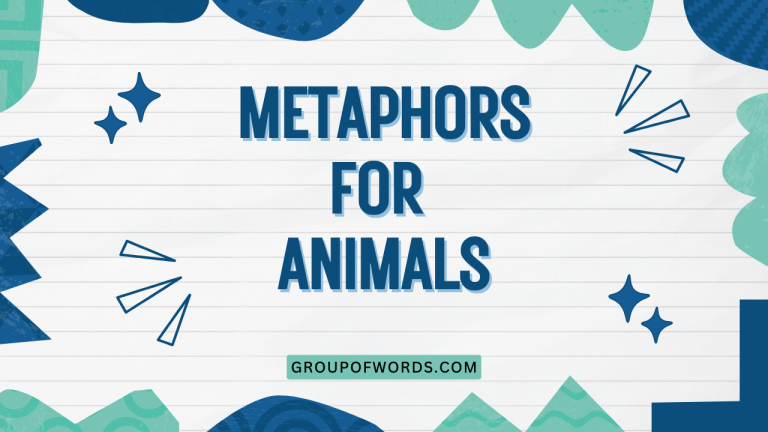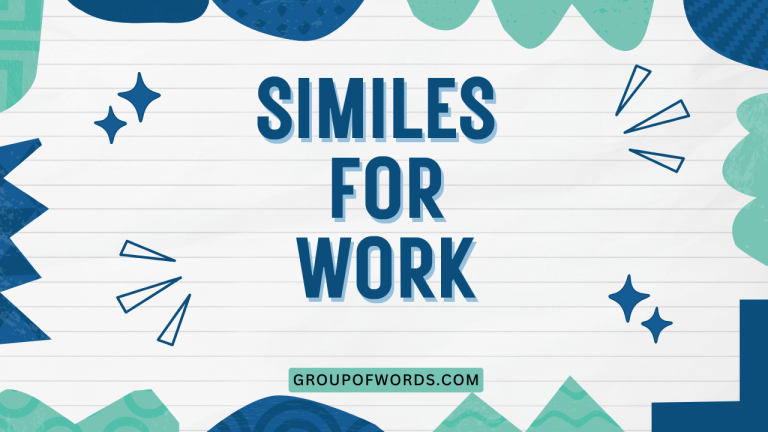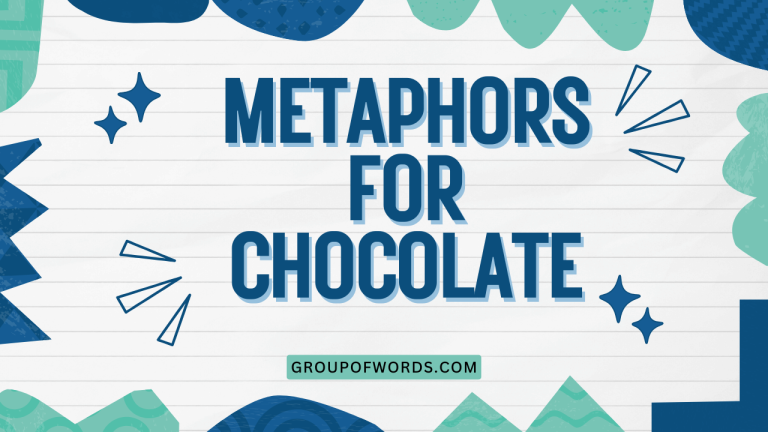Metaphors for Frustration: A Comprehensive Guide
Understanding metaphors is crucial for mastering the nuances of the English language. Metaphors, in general, enrich our communication by allowing us to express abstract concepts in more relatable and vivid ways.
When it comes to frustration, a particularly potent emotion, metaphors provide a colorful palette of expressions. This article delves into the world of metaphors for frustration, exploring their types, structures, and proper usage.
This guide is perfect for English language learners, writers seeking to add depth to their prose, and anyone interested in the expressive power of language.
This article will equip you with the knowledge to recognize, understand, and effectively use metaphors for frustration in both your written and spoken communication. By the end of this guide, you’ll have a strong grasp of how these metaphors work, their variations, and how to avoid common mistakes.
Get ready to unlock a deeper understanding of the English language and enhance your expressive abilities.
Table of Contents
- Introduction
- Definition of Metaphor for Frustration
- Structural Breakdown
- Types of Metaphors for Frustration
- Container Metaphors
- Physical Burden Metaphors
- Obstacle Metaphors
- Explosive Metaphors
- Animalistic Metaphors
- Examples of Metaphors for Frustration
- Container Metaphor Examples
- Physical Burden Metaphor Examples
- Obstacle Metaphor Examples
- Explosive Metaphor Examples
- Animalistic Metaphor Examples
- Usage Rules
- Common Mistakes
- Practice Exercises
- Advanced Topics
- FAQ
- Conclusion
Definition of Metaphor for Frustration
A metaphor for frustration is a figure of speech that uses an image, object, or concept to represent the feeling of frustration. It is a way of expressing the abstract emotion of frustration through concrete, relatable terms.
These metaphors don’t literally mean what they say; instead, they create an implicit comparison, suggesting a similarity between frustration and the chosen image.
Metaphors are essential in language because they allow us to communicate complex emotions and ideas in a more vivid and engaging way. They help us understand abstract concepts by relating them to something more tangible.
In the context of frustration, metaphors can make the experience more relatable and understandable to others. For example, saying “I’m at my wit’s end” is a metaphor that conveys a feeling of frustration and exhaustion without explicitly stating “I am frustrated.”
The function of a metaphor for frustration is to provide a richer, more evocative description of the feeling than a literal statement. Instead of simply saying, “I am frustrated,” a speaker or writer might use a metaphor to paint a picture of their internal state, such as “I’m banging my head against a brick wall.” This not only conveys the frustration but also gives the listener or reader a sense of the intensity and futility of the situation.
The context in which these metaphors are used often dictates their effectiveness; understanding the cultural and emotional implications of a metaphor is key to its successful application.
Structural Breakdown
The structure of a metaphor for frustration, like any metaphor, typically involves two key elements: the tenor and the vehicle. The tenor is the subject being described (in this case, the feeling of frustration), and the vehicle is the image, object, or concept used to represent that subject.
Consider the metaphor “I’m spinning my wheels.” Here, the tenor is the feeling of frustration arising from making no progress. The vehicle is the image of a car’s wheels spinning without gaining traction.
The metaphor works because there’s an implied similarity between the futile spinning of wheels and the unproductive feeling of being stuck in a frustrating situation.
The effectiveness of a metaphor depends on the clarity and relevance of the connection between the tenor and the vehicle. A good metaphor should resonate with the audience, creating a vivid and easily understandable image.
The stronger the association between the feeling of frustration and the chosen image, the more impactful the metaphor will be. For example, using a metaphor related to being physically trapped can effectively convey the feeling of being mentally or emotionally trapped by frustration.
Here’s a breakdown of the structural elements:
- Tenor: The feeling of frustration.
- Vehicle: The image, object, or concept used to represent frustration (e.g., a brick wall, a knot, a storm).
- Ground: The shared characteristics or similarities between the tenor and the vehicle (e.g., resistance, entanglement, turbulence).
Types of Metaphors for Frustration
Metaphors for frustration can be categorized based on the types of images or concepts they employ. Here are some common types:
Container Metaphors
Container metaphors describe frustration as a feeling contained within a space, often emphasizing the pressure or limit of that space. These metaphors often involve feelings of being trapped or overwhelmed.
Physical Burden Metaphors
Physical burden metaphors liken frustration to carrying a heavy load, emphasizing the weight and difficulty of dealing with the situation. These metaphors highlight the draining and exhausting aspects of frustration.
Obstacle Metaphors
Obstacle metaphors portray frustration as a barrier or impediment that prevents progress, highlighting the feeling of being blocked or stuck. These metaphors focus on the struggle to overcome challenges.
Explosive Metaphors
Explosive metaphors describe frustration as a build-up of pressure that eventually erupts or threatens to erupt, emphasizing the volatile and potentially destructive nature of intense frustration. These metaphors often convey a sense of being on the verge of losing control.
Animalistic Metaphors
Animalistic metaphors compare frustration to the behavior or characteristics of animals, often highlighting feelings of being caged, cornered, or driven by instinct. These metaphors can convey a sense of primal, uncontrollable frustration.
Examples of Metaphors for Frustration
Here are examples of metaphors for frustration, organized by category:
Container Metaphor Examples
Container metaphors vividly depict the feeling of frustration as being trapped or confined. These metaphors highlight the sense of being overwhelmed or unable to escape the source of frustration.
The following table provides examples of container metaphors for frustration. Each example illustrates how frustration can be conceptualized as a contained or confined space.
| Metaphor | Explanation |
|---|---|
| I’m at my wit’s end. | Feeling like you’ve exhausted all possible solutions and are left with nothing. |
| I’m in a pressure cooker. | Feeling intense pressure and stress that is building up. |
| I’m backed into a corner. | Feeling trapped and without any viable options. |
| I’m in a box. | Feeling restricted and unable to move freely. |
| I’m drowning in paperwork. | Feeling overwhelmed by a large amount of tasks or responsibilities. |
| I’m trapped in a maze. | Feeling lost and confused, unable to find a solution. |
| I’m stuck in a rut. | Feeling trapped in a repetitive and unfulfilling routine. |
| I’m in a tight spot. | Feeling in a difficult or precarious situation. |
| I’m in over my head. | Feeling overwhelmed by a situation or task that is too difficult. |
| I’m in a bind. | Feeling constrained and unable to act freely. |
| I’m up against a wall. | Feeling like you’ve reached an insurmountable obstacle. |
| I’m in a hole. | Feeling stuck in a difficult or negative situation. |
| I’m in quicksand. | Feeling like you’re sinking further into a problem with each attempt to escape. |
| I’m in a vortex. | Feeling pulled into a chaotic and uncontrollable situation. |
| I’m in a fog. | Feeling confused and disoriented, unable to see clearly. |
| I’m in a bubble. | Feeling isolated and disconnected from the solution. |
| I’m in a web. | Feeling entangled in a complex and difficult situation. |
| I’m in a cage. | Feeling confined and unable to escape. |
| I’m at the end of my rope. | Feeling like you’ve reached the limit of your endurance and patience. |
| I’m in a deadlock. | Feeling like progress is impossible due to opposing forces. |
| I’m in a corner. | Feeling trapped and without any viable options. |
| I’m in a box canyon. | Feeling trapped with no way out. |
| I’m in a cul-de-sac. | Feeling like you’ve reached a dead end. |
Physical Burden Metaphor Examples
Physical burden metaphors illustrate frustration as a heavy weight or strain. These metaphors emphasize the toll that frustration takes on one’s energy and well-being.
The table below provides examples of physical burden metaphors for frustration, highlighting the feeling of being weighed down by problems and challenges.
| Metaphor | Explanation |
|---|---|
| I’m carrying the weight of the world on my shoulders. | Feeling overwhelmed by responsibilities and problems. |
| This is a heavy burden to bear. | Feeling burdened and strained by a difficult situation. |
| I’m dragging my feet. | Feeling unwilling or unable to proceed due to frustration. |
| I’m feeling the strain. | Feeling the pressure and stress of a frustrating situation. |
| This is a load off my mind. | Feeling relieved after overcoming a frustrating obstacle. |
| I’m weighed down by this problem. | Feeling burdened and restricted by a frustrating issue. |
| I’m shouldering the responsibility. | Feeling responsible and burdened by a difficult task. |
| I’m bearing the brunt of it. | Feeling the full force of a negative situation. |
| I’m feeling the pressure. | Feeling stressed and burdened by expectations. |
| This is a heavy cross to bear. | Feeling burdened by a long-term or significant problem. |
| I’m lugging this around. | Feeling weighed down by a persistent problem or task. |
| I’m carrying this baggage. | Feeling burdened by past experiences or unresolved issues. |
| I’m feeling the drag. | Feeling slowed down or hindered by a frustrating situation. |
| It’s like climbing a mountain. | Feeling that a task is difficult and exhausting. |
| I’m pushing a boulder uphill. | Feeling that your efforts are strenuous and yielding little progress. |
| It’s a grind. | Feeling that a task is tedious and exhausting. |
| I’m feeling drained. | Feeling depleted of energy and motivation. |
| I’m running on empty. | Feeling completely exhausted and without resources. |
| This is a tough pill to swallow. | Feeling that a situation is difficult to accept or deal with. |
| I’m feeling the weight of expectations. | Feeling burdened by the expectations of others. |
| I’m feeling the burden of proof. | Feeling pressured to provide evidence or justification. |
| This is a heavy load. | Feeling overwhelmed by a large amount of tasks or responsibilities. |
| I’m carrying a torch for this. | Feeling a strong, often unrequited, passion or burden for something. |
| I’m bearing the consequences. | Feeling responsible for and burdened by the negative outcomes of a situation. |
Obstacle Metaphor Examples
Obstacle metaphors portray frustration as a barrier or impediment blocking progress. These metaphors emphasize the feeling of being stuck or unable to move forward.
The following table illustrates obstacle metaphors for frustration, highlighting the sense of being blocked by challenges and difficulties.
| Metaphor | Explanation |
|---|---|
| I’m banging my head against a brick wall. | Feeling like your efforts are futile and unproductive. |
| I’m hitting a dead end. | Feeling like you’ve reached a point where no further progress is possible. |
| I’m running into roadblocks. | Encountering obstacles that prevent progress. |
| I’m facing an uphill battle. | Feeling that the task is difficult and requires significant effort. |
| I’m up against a closed door. | Feeling that opportunities are unavailable or inaccessible. |
| I’m stuck in the mud. | Feeling unable to make progress due to difficulties. |
| I’m navigating a minefield. | Feeling that a situation is fraught with danger and potential problems. |
| I’m wading through treacle. | Feeling that progress is slow and difficult. |
| I’m swimming against the tide. | Feeling that you’re working against strong opposition or resistance. |
| I’m trying to climb a greased pole. | Feeling that a task is nearly impossible due to difficulties. |
| I’m tangled in red tape. | Feeling hindered by bureaucratic obstacles. |
| I’m caught in a Catch-22. | Feeling trapped in a paradoxical situation with no solution. |
| I’m at a standstill. | Feeling that progress has completely stopped. |
| I’m facing a hurdle. | Encountering an obstacle that needs to be overcome. |
| I’m blocked at every turn. | Feeling that obstacles are constantly appearing. |
| I’m hitting a snag. | Encountering an unexpected problem or difficulty. |
| I’m facing a mountain of paperwork. | Feeling overwhelmed by a large amount of tasks or documentation. |
| I’m stuck in a quagmire. | Feeling trapped in a complex and difficult situation. |
| I’m dealing with a bottleneck. | Feeling that progress is being slowed by a specific obstacle. |
| I’m facing a wall of resistance. | Feeling that you’re encountering strong opposition. |
| I’m bumping up against limitations. | Feeling restricted by constraints or boundaries. |
| I’m facing a closed book. | Feeling that a situation is opaque and impossible to understand. |
| I’m navigating a labyrinth. | Feeling lost in a complex and confusing situation. |
| I’m up against it. | Feeling challenged by difficult circumstances. |
Explosive Metaphor Examples
Explosive metaphors depict frustration as a build-up of pressure that can erupt. These metaphors emphasize the intense and potentially destructive nature of frustration.
The table below illustrates explosive metaphors for frustration, highlighting the feeling of being on the verge of losing control.
| Metaphor | Explanation |
|---|---|
| I’m about to blow a fuse. | Feeling on the verge of losing control and becoming angry. |
| I’m at the boiling point. | Feeling extremely angry and about to explode. |
| I’m ready to explode. | Feeling a strong urge to express anger or frustration. |
| I’m simmering with anger. | Feeling a low-level but persistent anger. |
| I’m about to snap. | Feeling on the verge of losing control and becoming irritable. |
| I’m about to lose it. | Feeling on the verge of losing control and becoming overwhelmed. |
| I’m reaching my breaking point. | Feeling like you can no longer tolerate the situation. |
| I’m on a short fuse. | Becoming easily angered or irritated. |
| I’m about to erupt. | Feeling a strong urge to express anger or frustration. |
| My blood is boiling. | Feeling extremely angry and agitated. |
| I’m steaming. | Feeling very angry and frustrated. |
| I’m fizzing with frustration. | Feeling a bubbling, almost explosive, sense of frustration. |
| I’m charged up with anger. | Feeling full of energy and anger, ready to explode. |
| I’m like a powder keg. | Feeling that you’re in a state where a small thing could trigger a big reaction. |
| I’m wound up tight. | Feeling tense and stressed, ready to snap. |
| I’m ready to burst. | Feeling overwhelmed and on the verge of emotional collapse. |
| I’m about to pop. | Feeling extreme pressure and the need to release it. |
| I’m overflowing with frustration. | Feeling completely overwhelmed by frustration. |
| My patience is wearing thin. | Feeling that your ability to tolerate something is diminishing. |
| I’m at the end of my tether. | Feeling that you’ve reached the limit of your endurance and patience. |
Animalistic Metaphor Examples
Animalistic metaphors describe frustration by comparing it to animal behaviors or characteristics. These metaphors emphasize feelings of being trapped, cornered, or driven by instinct.
The table below showcases animalistic metaphors for frustration, highlighting the primal and uncontrollable aspects of the emotion.
| Metaphor | Explanation |
|---|---|
| I feel like a caged animal. | Feeling trapped and unable to act freely. |
| I’m cornered like a rat. | Feeling trapped and desperate. |
| I’m like a bear with a sore head. | Feeling grumpy and irritable. |
| I’m snapping at everyone. | Reacting angrily and irritably to others. |
| I’m growling with frustration. | Expressing frustration in a low, angry tone. |
| I’m pacing like a tiger. | Feeling restless and agitated. |
| I’m as mad as a hornet. | Feeling extremely angry and agitated. |
| I’m like a dog with a bone. | Feeling persistent and unwilling to let go of a problem. |
| I’m ready to bite someone’s head off. | Feeling extremely angry and about to lash out. |
| I’m feeling like a fish out of water. | Feeling uncomfortable and out of place. |
| I’m like a bull in a china shop. | Feeling clumsy and likely to cause damage. |
| I’m feeling like a sitting duck. | Feeling vulnerable and exposed. |
| I’m like a cat on a hot tin roof. | Feeling extremely nervous and restless. |
| I’m feeling like a lamb to the slaughter. | Feeling helpless and destined for a negative outcome. |
| I’m like a headless chicken. | Feeling disorganized and frantic. |
| I’m feeling like a pack mule. | Feeling overworked and burdened. |
| I’m as stubborn as a mule. | Feeling unwilling to change your mind or give up. |
| I’m like a moth to a flame. | Feeling irresistibly drawn to something despite the risks. |
| I’m feeling hunted. | Feeling pursued or targeted. |
| I’m like a caged bird. | Feeling confined and longing for freedom. |
Usage Rules
Using metaphors effectively requires understanding some basic rules. First, ensure the metaphor is appropriate for the context. A lighthearted metaphor might be unsuitable for a serious situation, and vice versa. Second, the metaphor should be clear and understandable to your audience. Avoid obscure or overly complex metaphors that might confuse the listener or reader. Third, maintain consistency. Avoid mixing metaphors that create contradictory images.
For example, it would be inconsistent to say, “I’m drowning in paperwork and also sailing smoothly through it.” These two metaphors present conflicting images and undermine the intended message. Instead, choose a single, consistent metaphor that accurately reflects the feeling of frustration.
Consider the audience’s background and understanding when selecting a metaphor. A metaphor that relies on specific cultural knowledge might not be effective for an audience unfamiliar with that culture.
Always aim for metaphors that are relatable and universally understandable.
Here are some key rules to follow:
- Contextual Appropriateness: Ensure the metaphor fits the tone and situation.
- Clarity: Choose metaphors that are easily understood by your audience.
- Consistency: Avoid mixing metaphors that create conflicting images.
- Relevance: Select metaphors that accurately reflect the feeling of frustration.
- Originality: Strive for fresh and creative metaphors to make your communication more engaging.
Common Mistakes
One common mistake is using clichéd metaphors that have lost their impact through overuse. Phrases like “at the end of my rope” or “banging my head against a brick wall” can sound stale and unoriginal. While these metaphors are understandable, they lack the freshness and impact of more creative alternatives.
Another mistake is using mixed metaphors, which combine unrelated images and create confusion. For example, saying “I’m climbing an uphill battle and also drowning in paperwork” mixes the metaphor of a difficult climb with the metaphor of being overwhelmed by tasks, resulting in a nonsensical image.
A third mistake is using metaphors that are too abstract or unclear. The metaphor should create a vivid and easily understandable image. If the audience struggles to grasp the connection between the tenor and the vehicle, the metaphor will fail to convey the intended meaning.
Here are some examples of common mistakes and corrections:
| Incorrect | Correct | Explanation |
|---|---|---|
| I’m at the end of my rope and also sailing smoothly. | I’m at the end of my rope. | Avoid mixing metaphors. |
| I’m banging my head against a brick wall, but the door is open. | I’m banging my head against a brick wall. | Choose a single, consistent metaphor. |
| I’m feeling frustrated like a quantum entanglement. | I’m feeling trapped in a maze. | Ensure the metaphor is relatable and understandable. |
| That project is a real beast and a walk in the park. | That project is a real beast. | Avoid contradictory metaphors. |
| I’m climbing that ladder one step at a time while simultaneously drowning in a sea of troubles. | I’m drowning in a sea of troubles. | Maintain a consistent image. |
Practice Exercises
Test your understanding of metaphors for frustration with these exercises:
Exercise 1: Identify the Metaphor
Identify the metaphor used to express frustration in each sentence.
| Question | Answer |
|---|---|
| 1. I’m drowning in emails. | Drowning |
| 2. This project is like climbing a mountain. | Climbing a mountain |
| 3. I’m banging my head against a brick wall with this problem. | Banging my head against a brick wall |
| 4. I’m feeling the weight of the world on my shoulders. | Weight of the world |
| 5. I’m at my wit’s end. | Wit’s end |
| 6. This situation is a pressure cooker. | Pressure cooker |
| 7. I’m caught in a Catch-22. | Catch-22 |
| 8. I’m running into roadblocks at every turn. | Roadblocks |
| 9. I’m about to blow a fuse. | Blow a fuse |
| 10. I feel like a caged animal. | Caged animal |
Exercise 2: Complete the Metaphor
Complete the following sentences with an appropriate metaphor for frustration.
- I’m so frustrated; I feel like I’m ____________________. (Answer: spinning my wheels)
- Dealing with this issue is like ____________________. (Answer: swimming against the tide)
- I’m so overwhelmed; I feel like I’m ____________________. (Answer: in over my head)
- This problem makes me want to ____________________. (Answer: tear my hair out)
- I’m so angry; I feel like I’m ____________________. (Answer: about to explode)
- Trying to get this done is like ____________________. (Answer: pushing a boulder uphill)
- I’m so stuck; I feel like I’m ____________________. (Answer: in quicksand)
- This bureaucracy is ____________________. (Answer: red tape)
- I’m so frustrated; I’m ____________________. (Answer: at the end of my tether)
- This situation is ____________________. (Answer: a minefield)
Exercise 3: Rewrite with a Metaphor
Rewrite the following sentences using a metaphor to express the feeling of frustration.
- I am very frustrated because I cannot make any progress. (Answer: I’m banging my head against a brick wall.)
- I am extremely overwhelmed with all the tasks I have to do. (Answer: I’m drowning in tasks.)
- I am very angry and about to lose control. (Answer: I’m about to blow a fuse.)
- I feel trapped and unable to escape this difficult situation. (Answer: I feel like a caged animal.)
- I have exhausted all possible solutions and don’t know what to do. (Answer: I’m at my wit’s end.)
- I’m working against strong opposition. (Answer: I’m swimming against the tide.)
- This task is difficult and requires significant effort. (Answer: This is like climbing a mountain.)
- I am feeling responsible for a difficult task. (Answer: I’m shouldering the responsibility.)
- I have reached a point where no further progress is possible. (Answer: I’ve hit a dead end.)
- I am feeling stressed and burdened by expectations. (Answer: I’m feeling the pressure.)
Advanced Topics
For advanced learners, exploring the cultural variations in metaphors for frustration can be insightful. Different cultures may use different images and concepts to represent frustration, reflecting their unique values and experiences. For example, a metaphor related to nature might be more common in a culture with a strong connection to the environment.
Another advanced topic is the use of extended metaphors. Instead of using a single metaphor, a writer might develop a more complex and sustained metaphor throughout a piece of writing. This can create a richer and more immersive experience for the reader, but it also requires careful planning and execution.
Furthermore, exploring the historical evolution of metaphors for frustration can provide a deeper understanding of how language and culture have shaped our understanding of this emotion. Some metaphors may have originated in specific historical contexts and evolved over time.
Finally, analyzing the use of metaphors for frustration in literature and rhetoric can enhance your critical thinking skills and deepen your appreciation for the power of language. Examining how different authors and speakers use metaphors to convey frustration can provide valuable insights into their perspectives and techniques.
FAQ
- What is the difference between a metaphor and a simile?
A metaphor directly equates two unlike things, while a simile uses “like” or “as” to make a comparison. For example, “I’m drowning in paperwork” is a metaphor, while “I feel like I’m drowning in paperwork” is a simile.
- Why are metaphors useful in expressing frustration?
Metaphors provide a vivid and relatable way to communicate the intensity and complexity of frustration. They help others understand your feelings by relating them to concrete images and concepts.
- How can I avoid using clichéd metaphors?
Strive for originality by thinking of fresh and creative images that accurately reflect your feelings. Consider using metaphors that are specific to your personal experiences or interests.
- What should I do if my metaphor is misunderstood?
Clarify your meaning by explaining the connection between the metaphor and your feelings. Consider using a different metaphor that might be more easily understood by your audience.
- Are there any metaphors for frustration that should be avoided?
Avoid metaphors that are offensive, insensitive, or culturally inappropriate. Be mindful of your audience and choose metaphors that are respectful and inclusive.
- How can I improve my use of metaphors for frustration?
Read widely and pay attention to how different writers and speakers use metaphors. Practice using metaphors in your own writing and speaking, and ask for feedback from others.
- Can metaphors for frustration be used in formal writing?
Yes, but use them judiciously. Ensure that the metaphors are appropriate for the tone and audience of the formal writing. Overusing metaphors can make your writing sound overly dramatic or informal.
- How do cultural backgrounds influence the understanding of metaphors for frustration?
Different cultures may have different associations with certain images and concepts, which can affect the understanding of metaphors. Be mindful of cultural differences and choose metaphors that are likely to be understood by your audience.
